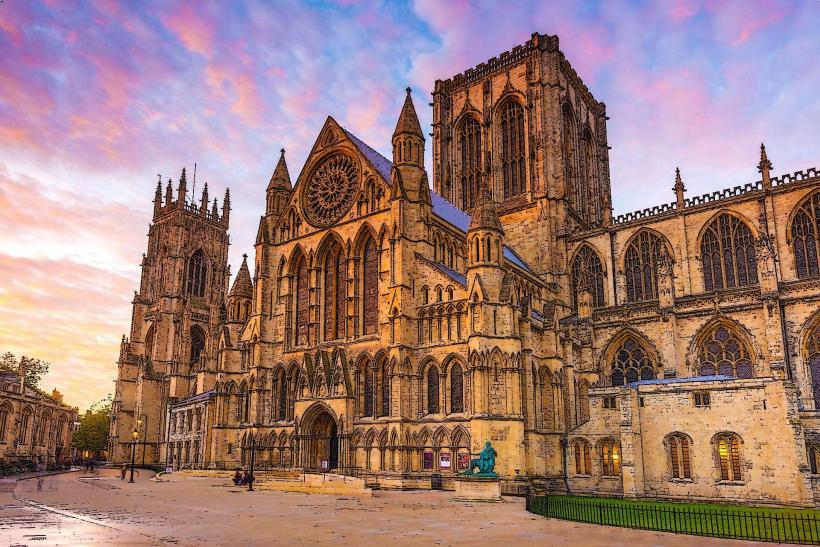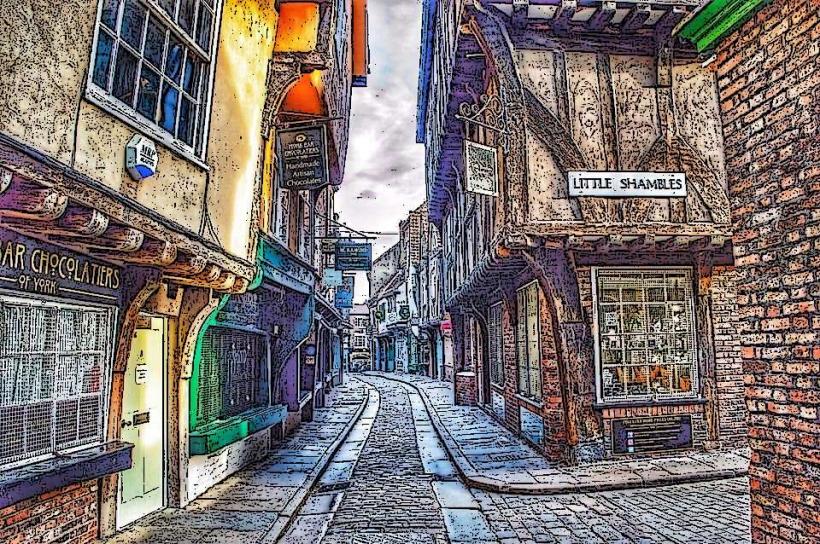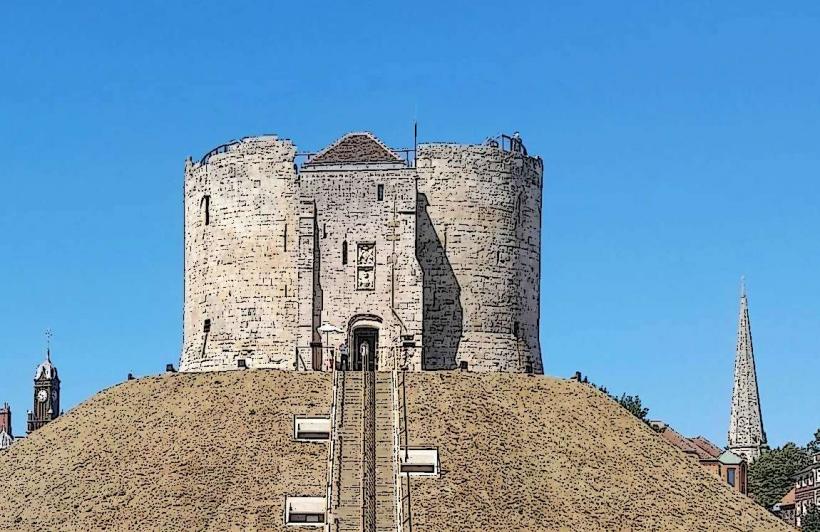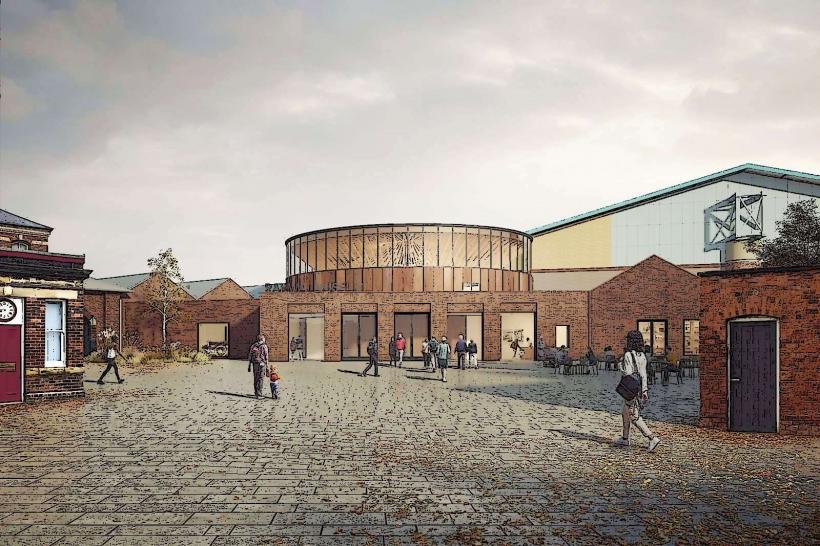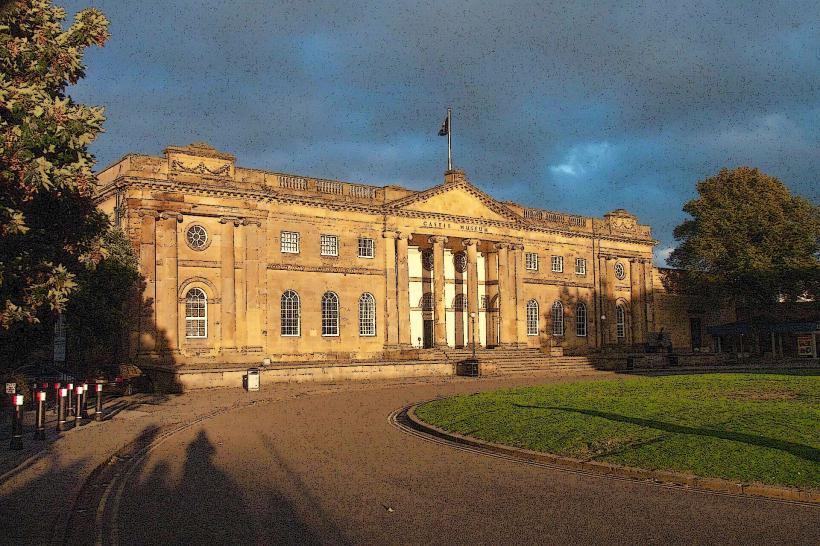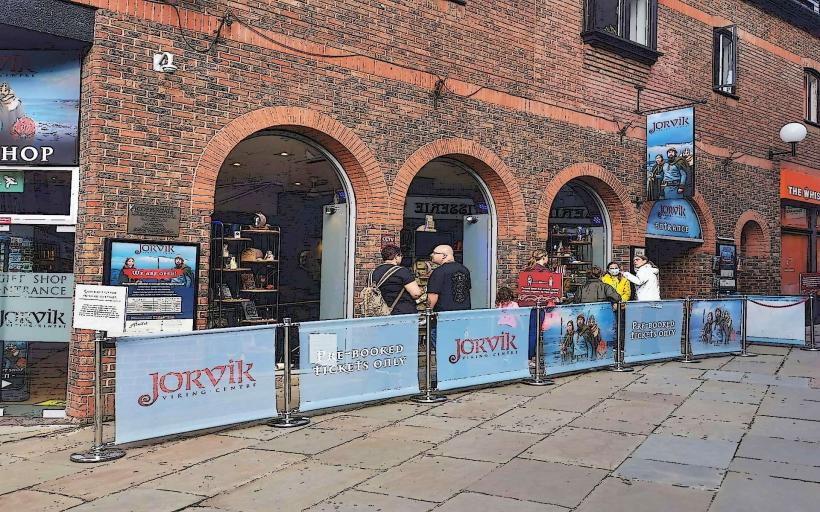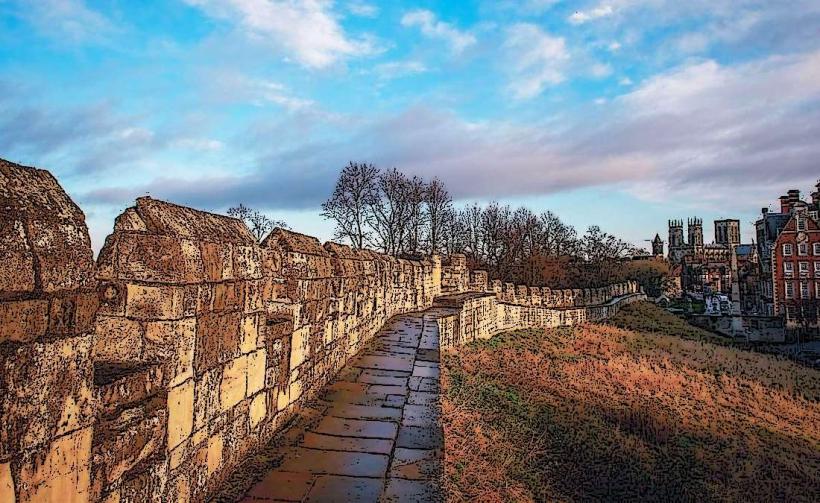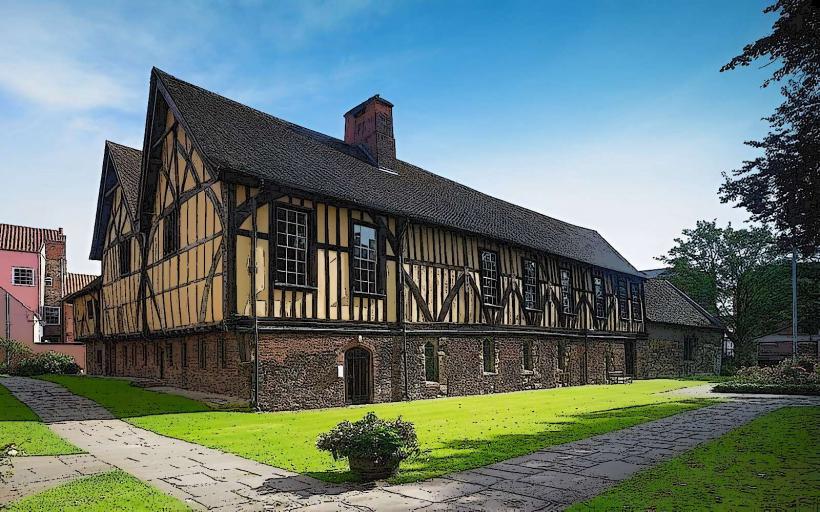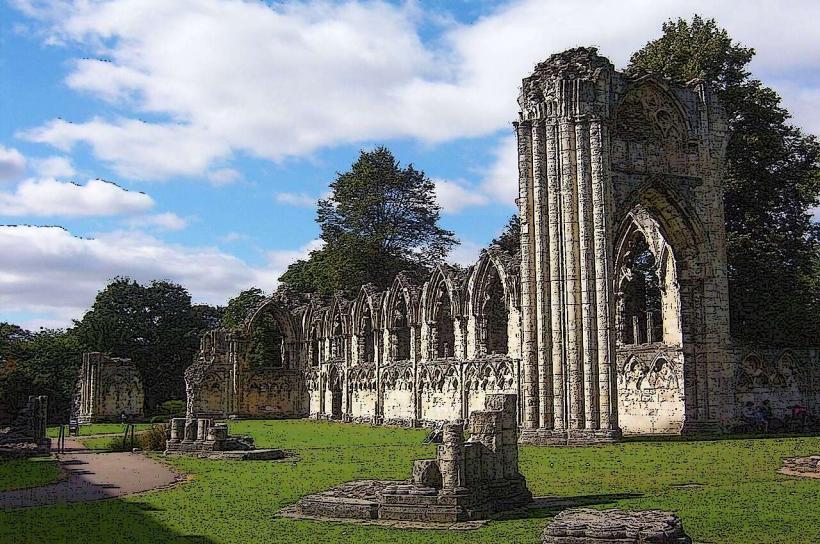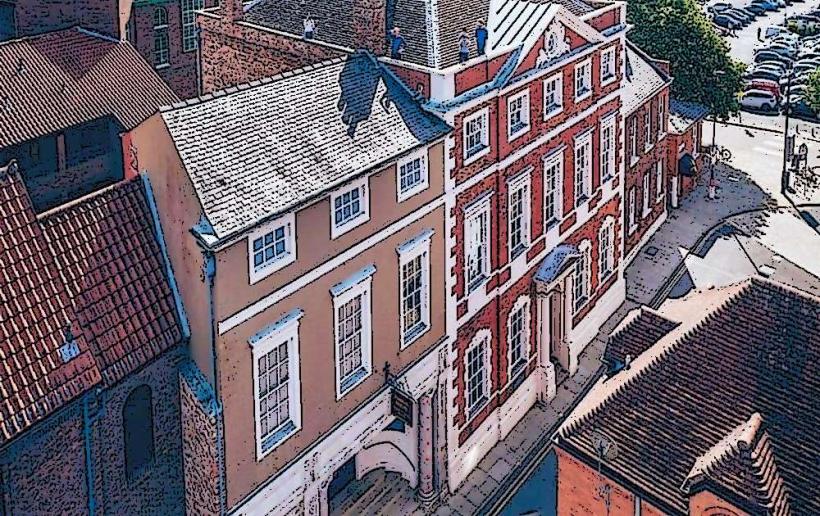Information
City: YorkCountry: United Kingdom
Continent: Europe
York is a historic city located in the North of England, renowned for its rich heritage, stunning medieval architecture, and vibrant cultural life. With its blend of Roman, Viking, and medieval history, York is one of the most popular tourist destinations in the UK. The city is known for its beautiful streets, iconic landmarks, and diverse museums. Here’s an in-depth look at York:
1. Geography and Location
- Location: York is situated approximately 200 miles (320 kilometers) north of London, in the county of North Yorkshire. It lies at the confluence of the Rivers Ouse and Foss, contributing to its strategic historical significance.
- Climate: York experiences a temperate maritime climate, with relatively cool winters and mild summers. The city often enjoys moderate rainfall throughout the year.
2. History
- Roman Era: York has a deep Roman heritage and was founded in 71 AD as Eboracum by the Romans. It became the capital of Roman Britain in the 4th century and was the birthplace of the Roman Emperor Constantine the Great.
- Viking Influence: In the 9th century, the Vikings captured York and established it as the capital of the Kingdom of Jorvik. The Viking influence is still visible in the city’s archaeology and place names.
- Medieval Period: In the medieval era, York became an important center for trade, religion, and politics. The Normans built York Castle, and the city became a hub for wool trade and political power.
- Modern Era: During the Industrial Revolution, York grew as a center for railways and became a significant hub for transport and industry. Today, York is a thriving tourist destination and a center for education and research.
3. Landmarks and Attractions
York is home to an array of iconic landmarks, historical sites, and cultural treasures, many of which reflect its rich heritage.
- York Minster: One of the largest and most impressive cathedrals in Northern Europe, York Minster is a masterpiece of Gothic architecture. The cathedral’s stunning stained-glass windows, towering spires, and intricate stone carvings make it a must-see for visitors. You can also climb the Central Tower for breathtaking views of the city.
- The Shambles: Often described as one of the best-preserved medieval streets in Europe, The Shambles is a narrow, cobbled street lined with timber-framed buildings, many of which date back to the 14th century. The street is filled with shops, cafes, and restaurants, and it has a unique, atmospheric charm.
- York Castle: Also known as Clifford’s Tower, this medieval castle is a prominent landmark in York. The tower is the remains of a Norman fortress built in the 11th century and offers panoramic views of the city. The York Castle Museum is located nearby and provides insight into the city’s past, featuring exhibits on Victorian life, the castle’s history, and more.
- National Railway Museum: York is famous for its railway history, and the National Railway Museum is one of the most comprehensive railway museums in the world. It features a vast collection of locomotives, carriages, and railway memorabilia, including famous trains like the Flying Scotsman and Mallard.
- Jorvik Viking Centre: A must-visit for those interested in York’s Viking past, the Jorvik Viking Centre offers an immersive experience that brings to life the Viking city of Jorvik (modern-day York). Visitors can explore reconstructions of Viking streets, learn about Viking craftsmanship, and view incredible archaeological discoveries.
- York City Walls: The ancient walls that surround the city are among the most complete in England. Visitors can walk along the York City Walls, which offer beautiful views of the city, including landmarks like Clifford’s Tower and the River Ouse.
- York Dungeon: A thrilling and interactive attraction that delves into York’s darker history, including tales of medieval torture, plague, and hauntings. The Dungeon offers a mix of live-action performances, special effects, and historic storytelling.
- Barley Hall: A beautifully restored medieval townhouse, Barley Hall offers a glimpse into the life of a wealthy merchant family during the Middle Ages. The hall is filled with medieval artifacts, tapestries, and period furnishings.
- York Castle Museum: Located in the former prison of York Castle, this museum offers a fascinating journey through York's history, showcasing life in the city through the ages. Highlights include a recreated Victorian street, an exhibit on the city's role in the World Wars, and collections on social history.
- Rowntree Park: A tranquil park located near the city center, Rowntree Park is perfect for a leisurely stroll or a picnic. It features a lake, playgrounds, and plenty of green space for relaxation. The park was designed by William Rowntree, a prominent figure in the city’s history.
- Micklegate Bar: Once the main entrance to the city for travelers arriving from the south, Micklegate Bar is a striking medieval gatehouse that marks the site where traitors were once executed. The bar features a small museum dedicated to the history of York’s gates and the city walls.
- Museum Gardens: A picturesque garden located next to York Minster, Museum Gardens offers a peaceful setting filled with historic ruins, including the Roman ruins of St. Mary's Abbey and the Medieval walls of the city. The gardens are home to the Yorkshire Museum, which houses collections of Roman, Viking, and medieval artifacts.
4. Culture and Arts
- York Theatre Royal: One of the oldest and most important theatres in the city, York Theatre Royal hosts a wide range of performances, from classic plays to modern drama, as well as dance and music events.
- York Art Gallery: Featuring a rich collection of paintings, ceramics, and decorative arts, the York Art Gallery is an important cultural venue in the city. It showcases works by renowned artists such as J.M.W. Turner and John Sell Cotman, as well as contemporary exhibitions.
- York Literature Festival: A celebration of literature, the York Literature Festival brings together authors, poets, and readers for events, talks, and workshops throughout the year.
- York International Shakespeare Festival: Held every two years, this festival celebrates the life and works of William Shakespeare through performances, workshops, and lectures.
5. Parks and Green Spaces
- Museum Gardens: A tranquil park with beautiful views of the York Minster, St. Mary’s Abbey, and Roman ruins. It is an ideal place for a peaceful walk or a picnic.
- Rowntree Park: A serene park with a lake, playgrounds, and well-maintained gardens. It offers a relaxing escape from the busy city center.
- West Bank Park: Located on the western side of the city, this park features walking paths, flower gardens, and large green lawns perfect for outdoor activities.
6. Education
- University of York: Founded in 1963, the University of York is a leading university with a strong reputation in research and teaching. It offers a wide range of programs across various disciplines, including the humanities, sciences, and social sciences.
- York St John University: Another prominent higher education institution in the city, York St John University offers a variety of undergraduate and postgraduate courses, with a particular focus on arts, business, and education.
- York College: A major further education institution offering vocational courses, A-levels, and apprenticeship programs.
7. Economy
- Tourism: York is a major tourist destination, attracting visitors from around the world. The city's medieval charm, historic landmarks, and cultural offerings make it a popular spot for both day trips and longer stays.
- Retail: York boasts a variety of independent shops, boutiques, and department stores, particularly around Stonegate, High Ousegate, and the Shambles. The Coppergate Centre is also a popular shopping complex.
- Education and Research: The University of York and other educational institutions contribute to the city’s economy, particularly in research, technology, and innovation.
8. Transport
- York Railway Station: A major hub on the East Coast Main Line, providing regular services to London, Edinburgh, Manchester, and other cities. The station is a key transport link for both commuters and tourists.
- Bus Services: York has a well-connected bus network, providing easy access to the city’s neighborhoods and surrounding areas.
- Cycling: York is known as a bike-friendly city, with an extensive network of cycle paths and bike hire stations.
- York Airport: Located outside the city, Leeds Bradford Airport serves York for both domestic and international flights.
9. Conclusion
York is a city steeped in history, with a wealth of cultural, architectural, and natural attractions. Whether you're exploring its medieval streets, visiting world-class museums, or simply enjoying the tranquil beauty of its parks and gardens, York offers something for everyone. Its unique blend of ancient heritage and modern charm makes it one of the most fascinating cities in the UK.

